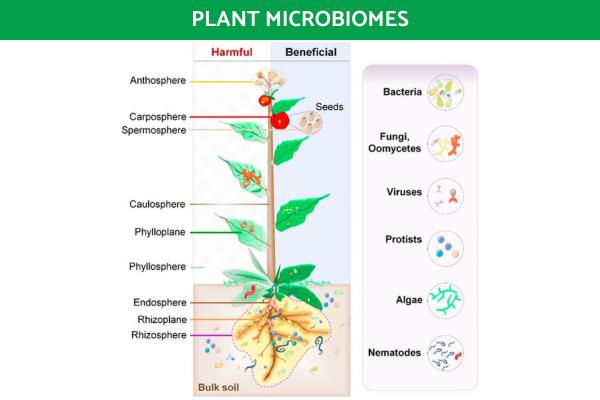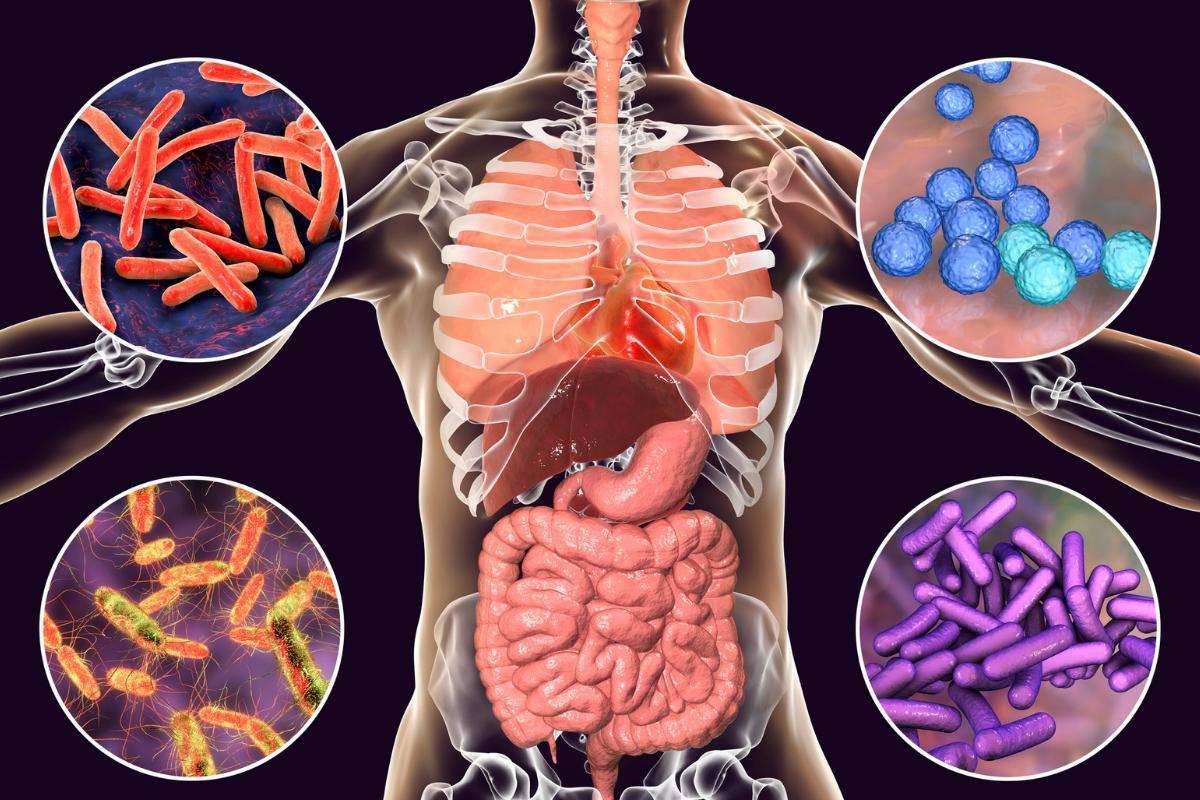Types of Microbiome - Definition and Examples


Microorganisms are microscopic living beings imperceptible to the eye that are found everywhere. We can find them in the soil, at the bottom of the ocean and even in the human intestine. We often associate microbes with harmful organisms such as pathogens. These are microorganisms which cause disease to humans, animals, plants and other living things. However, there are microorganisms in these larger organisms which are essential for life and wellbeing.
At thedailyECO, we look at the different types of microbiome. We provide a definition and examples of the biome to help better understand why considering the little things can have such a big impact on our ecosystems.
What is the microbiome?
The microbiome refers to a community of microorganisms that occupies a defined habitat. When we talk about the microbiome, we must not only take into account the types of microorganisms, but also their activity. This refers to the way they interact with each other and with their surrounding environment.
In this way, the microbiome is a dynamic microecosystem that involves the various genomes and metabolites of the microbial community, as well as the prevailing environmental conditions to which they are subjected. It is integrated into complex macroecosystems, such as in humans. We often refer to the gut microbiome in reference to that of the human intestine. This microecosystem of the gut is part of the larger ecosystem of the body.
The similar term microbiota is a similar term which is often confused with the microbiome. The microbiota is defined as the set of microorganisms such as bacteria, archaea, unicellular algae or fungi that inhabit a specific environment. The difference between microbiota and microbiome is that the latter term takes into account the interactions between organisms and the environment, i.e. a microbiome encompasses the microbiota and its activity.
The human microbiome
The human microbiome varies according to the individual. Bacterial communities depend on a series of factors such as humidity, temperature and nutrients that determine their survival. Similarly, bacterial colonization occurs throughout the entire life cycle of a person. The communities present in a newborn will not be the same as in an adult due to different ages, diets, hormonal development, sexual maturity and many other factors.
The microbiome can be altered by the consumption of drugs (e.g. antibiotics), variations in diet, stress and much more. There are diseases that can be the result of an imbalance of the microbiome. They include diabetes, allergies, gastrointestinal diseases, arthritis and even cancer.
Within the human body, some of the functions of the microbiome are:
- Digestion: the bacteria present in the intestinal microbiome help in the degradation of complex carbohydrates present in the cell walls of plants such as cellulose, hemicellulose and pectin. It is for this reason they are able to help facilitate digestion.
- Immune system: bacteria can indicate to lymphocytes which cells are beneficial and which are harmful (antigens). In this way they can determine which of them will predominate in that environment.
- Protection against pathogens: the bacteria present in the microbiomes of the skin, the oral cavity, the respiratory tract and the vagina protect the mucous membranes from the proliferation of pathogenic microorganisms as they act as a physical and chemical barrier.
Learn about some of the microorganisms which make up the microbiome with our article on the difference between viruses and bacteria.

Soil and plant microbiome
An example of type of microbiome is the rhizosphere microbiome. The definition of the rhizospehre is the portion of the soil in the immediate surrounding of the plant's roots. In this area are many interactions of soil microbiota. Another example is that of the phyllosphere. This is where communities of microorganisms such as bacteria and fungi develop and interact on the surface of the plant above the soil.
Such examples of plant microbiome can fulfill the following functions:
- Nutrient cycling: through processes such as mineralization, immobilization and solubilization, microorganisms provide nutrients that can be used by plants.
- Plant growth: microorganisms produce substances such as gibberellins and auxins that stimulate plant growth.
- Protection: the microbial community protects plant roots from pathogens through the production of antibiotics and can also detoxify toxic substances secreted by some plants that can harm other organisms.
- Symbiosis: microorganisms can carry out mutualistic symbiotic associations with plants, favoring their growth and development.
- Remediation: for example, the microbiomes present in the soil and in association with plants can help treat contaminated soils and water, improving their quality in the process.

Marine microbiome
In the oceans there is a great diversity of microorganisms that are associated with different hosts. In doing so they form different microbiomes. Examples of microbiomes range from invertebrate animals such as marine sponges to large vertebrates such as sharks. We provide some examples of microbiomes in aquatic ecosystems and their functions:
- Nutrient cycling and storage: research shows that the microbiomes of sea sponges contribute to the cycling of nutrients such as nitrogen in the oceans. These and other organisms are also able to store nutrients such as phosphorus in the form of phosphates. In turn, they fulfill another fundamental function associated with the conversion of dissolved carbon released by other organisms into organic carbon that would remain available for heterotrophic organisms.
- Defense: in various marine organisms such as corals, there are bacteria in their superficial layers that produce antibacterial compounds. In this way, they protect against possible infection. In the case of cetaceans such as orcas, their microbiome present on the skin acts as a physical barrier protecting the animal from the external environment, It is not only an indicator of its health, but also of the health of the environment.
It should be noted that in this article we only mention some of the many examples that exist in nature. Although not all organisms have a functional microbiome[1], many do. Learn more about how organisms interact with our article on the different types of ecosystems.

If you want to read similar articles to Types of Microbiome - Definition and Examples, we recommend you visit our Biology category.
1. Hammer, T. J., Sanders, J. G., & Fierer, N. (2019). Not all animals need a microbiome. FEMS microbiology letters, 366(10), fnz117.
https://doi.org/10.1093/femsle/fnz117
- Microbiome. Retrieved from: https://es.wikipedia.org/wiki/Microbioma#Microbioma_vegetal
- Uzcátegui, O. (2016). Human microbiome. Retrieved from: http://ve.scielo.org/scielo.php?pid=S0048-77322016000100001&script=sci_arttext







